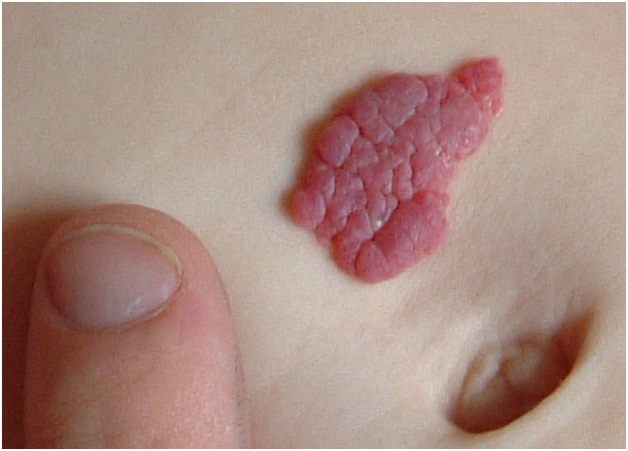Hemangioma Causes, Symptoms, Diagnosis and Treatment

What Is Hemangioma?
Hemangioma is a benign and usually self-involuting tumor of the endothelial cells that line the blood vessels.
It involves an increased number of abnormal blood vessels filled with blood which may lead to the appearance of rubbery, bright red nodules on the skin.
Also known as a strawberry mark due to its uncanny resemblance to the color of strawberries, a hemangioma is a birth mark which may persist during the early years of a child’s life but may disappear by the age of 10.
A hemangioma may develop in different locations which may include the face, scalp, chest or back.
Treatment is not required if no symptoms are exhibited. In more severe cases hemangiomas may leave residual tissue damage. If the nodules cause discomfort in any sense, treatment may be sought.
Hemangiomas are of four types based on the type of vessel involved.
- Superficial
- Deep
- internal
- Mixed (containing both a superficial and a deep component
Causes Of Hemangioma:
The exact cause of hemangioma is yet unknown. However, research conducted on this domain has shed light on possible factors which may contribute in development of hemangiomas.
Several studies have linked the development of hemangiomas to estrogen which may contribute in signaling the hemangioma to proliferate.
Furthermore, a theory also links hemangioma to maternal placentaeembolizes. Moreover, genetics may also play role.
Female white premature babies are at a higher risk of developing hemangiomas than the rest.
Symptoms Of Hemangioma:
Hemangioma may or may not cause exhibition of symptoms other than the presence of red nodules.
If symptoms do occur, the following signs and symptoms may be exhibited:
- Presence of rubbery red nodules
- A massive raised tumor
- nausea
- vomiting
- abdominal discomfort
- loss of appetite
- unexplained weight loss
- a feeling of fullness in the abdomen
Hemangiomas may lead to development of complications including:
- Ulceration, if hemangioma breaks down on the surface
- Breathing problems if hemangioma is in the larynx
- Vision impairment if hemangioma causes blockage in the line of sight
Diagnosis Of Hemangioma:
Hemangioma may e diagnosed via physical examination of the benign tumor. There are no diagnostic tests which may help in the diagnosis of hemangioma.
Treatment Of Hemangioma:
Commonly, hemangiomas may disappear on their own without leaving any marks and therefore do not require any treatment
However, if the growth of the hemangioma causes occurrence of complications, the following treatment options are available:
- Corticosteroid medications.
- Laser surgery, to improve vision
Related Articles:
Swimmers Itch Causes, Symptoms, Diagnosis and Treatment
Tularemia Causes, Symptoms, Diagnosis and treatment
Cold Sores Causes, Symptoms, Diagnosis and Treatment
Progeria Causes, Symptoms, Diagnosis and Treatment
Raynaud’s Disease Causes, Symptoms, Diagnosis and Treatment
Stye Causes, Symptoms, Diagnosis and Treatment
Antiphospholipid Syndrome (APS) Causes, Symptoms, Diagnosis And Treatment
Castleman Disease Causes, Symptoms, Diagnosis And Treatment
Diaper Rash Causes, Symptoms, Diagnosis and Treatment
Cellulitis Causes, Symptoms, Diagnosis and Treatment
Tinea Versicolor Causes, Symptoms, Diagnosis and Treatment
Prickly Heat Causes, Symptoms, Diagnosis and Treatment
By : Natural Health News




